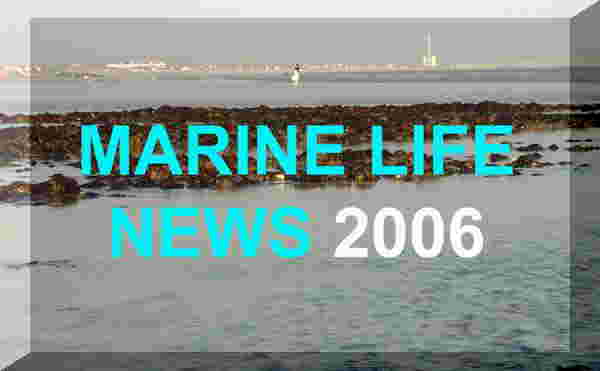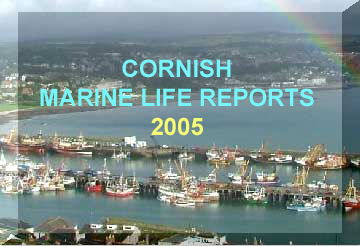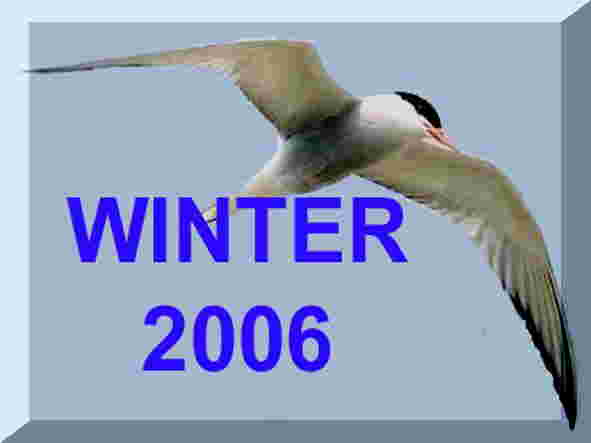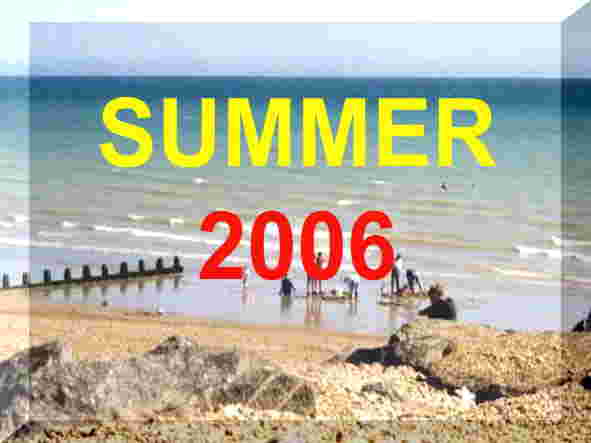22
September 2006
A
8 metre long Humpback Whale, Megaptera
novaengliae, became wedged in the
King George Dock in the River Humber estuary near Hull, where it died.
15
September 2006
Fisherman
Geoff
Blake was stunned when he discovered an unusual
30 cm long fish in his regular morning catch off Ventnor,
southern Isle of Wight. The fish was identified*
by
the fisherman as the first ever Lesser Amberjack,
Seriola
fasciata, to be found in British seas.
All four of the Amberjacks
of the North Atlantic Ocean are vagrants in British seas and there are
only 17 confirmed records of the other three species. This fish was caught
in 6 metres of water, just 200 metres from the shore.
(*Identity
to be confirmed. These fish are difficult to identify, sometimes requiring
a count of the gill rakers. Recent fish caught have been the Almaco
Jack, Seriola
rivoliana.)
2004
Amberjack Report
BMLSS
Amberjack Notes
13
September 2006
A
vagrant Atlantic Tripletail,
Lobotes
surinamensis, was caught in a stake
net on
the
banks of the River Severn near Newport. The fish is now in the National
Museum and Galleries of Wales with the Curator
of Vertebrates, Peter Howlett.
This
tropical fish is likely to be the first one ever caught in British seas.
It is a sluggish offshore fish that often floats on its side near the surface
in the company of floating objects.
9
September 2006
Steve
Trewhella and Julie Hatcher found about sixteen
Compass
Jellyfish, Chrysaora hysoscella,
washed up on the beach
at Sandymouth Bay, near Bude
in north Cornwall.
Amphipod
Hyperia
galba on a Compass
Jellyfish
from
Yerseke Marina in the Netherlands
Photographs
©
by Richard Lord (Guernsey)
A number
of these contained the symbiotic amphipod
crustacean Hyperia
galba alive inside them. These are
remarkable little creatures with large green eyes, and as adults they are
only found in jellyfish.
BMLSS
Jellyfish-1
BMLSS
Jellyfish-2
BMLSS
Hyperia
6 September
2006
A
210 kg (gutted weight) Thresher Shark,
Alopias,
was caught in the North Sea, landed in Sweden and put on sale in Finland.
BMLSS
Sharks
BMLSS
Shark News
August
2006

This
attractive crab was brought in by a potter from Milford
Haven, south-west Wales. It is about 40 mm wide and is now alive and
well in the Silent World Aquarium at Tenby.
It is the species Monodaeus couchi which
is seldom recorded and may be one of the rarer crabs from the seas around
the British Isles.
BMLSS
Crabs
31
August - 1 September 2006
A
pair of Northern Bottle-nosed Whales,
Hyperoodon
ampullatus, were washed up alive on
the Lincolnshire coast (North Sea east coast of England) and despite strenuous
attempts by the British
Divers Marine Life Rescue using pontoons to float the whales, the female
died on the scene, and the male towed 1.2 km out ot sea and seen to swim
away, was found washed up dead at Seacroft,
near Skegness, on the second day.
Previous
Stranding in London
25
August 2006
An
unusual discovery of a fresh but dead 27 kg (60 lb) Tuna
was found on a soft mud bank at Burry
Port, Carmarthenshire, south Wales, by
local angler Nick Roberts
and it was pulled ashore with some difficulty by
three
teenagers. The exact species is not known at present: the most likely
species is the Bluefin Tuna, Thunnus thynnus.
BMLSS
Tuna Page
17
August 2006
A
Basking
Shark, Cetorhinus maximus,
was seen in Brixham Harbour, Devon, near the Lifeboat station. It was about
2.5 metres in length.
During
a routine aerial survey for marine wildlife off the southwestern tip of
Cornwall this morning, researchers from the University
of Exeter School of Biosciences, the Marine
Conservation Society (MCS) and Cornwall
Wildlife Trust counted 18 Basking Sharks.
They were concentrated on the north coast and spotted during the two-hour
aerial survey.
BMLSS
Basking Sharks
13
- 14 August 2006

Buoy
Barnacles on White Park Bay beach (north
Antrim)
Photograph
by Dave Harrison
Large
numbers of Buoy Barnacles,
Dosima
fascicularis, were found stranded on the
north coast beaches of Northern Ireland, e.g. Portstewart
Strand and White
Park Bay (County Antrim). There were at least six of these batches
seen on the White Park Bay beach during the walk
Buoy
Barnacles are
attached to floats that they had secreted that have a texture like that
of expanding foam.
BMLSS
Barnacles
Earlier
Report (received after this one)
August
2006

A Long-finned
Pilot Whale, Globicephala melas, was
washed up dead on Gruinard
Bay,
off Gruinard Island.
The nearest place on the map is probably Laide.
August
2006
Twenty
one years after they were reintroduced, the hard work by conservation groups,
volunteers, the police, local communities and landowners, has paid off
with the two hundredth White-tailed Sea
Eagle, Halieetus
albicilla, chick fledging in
the wild on the Isle of Skye.
12
August 2006
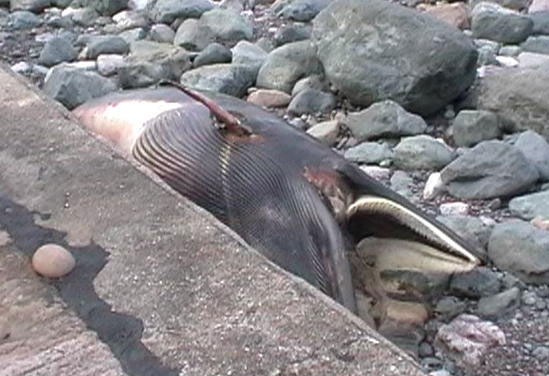
A
Minke
Whale, Balaenoptera acutorostrata,
was discovered washed up dead on the rocky coast at Seascale
in Cumbria (NW England). A Harbour Porpoise,
Phocoena
phocoena, was also washed up dead within
10 metres of the whale.
BMLSS
Cetacea
7 August
2006
A
vagrant 18 kg (40 lb) Yellowfin Tuna, Thunnus albacares
(originally
identified as a Big-eyed Tuna,
Thunnus
obesus), was a rare capture by a commercial
net fisherman 70 miles off Land's End and 2,000 miles adrift of its usual
habitat in the tropical Atlantic Ocean.
It
was only the second capture on record from British seas.
BMLSS
Tunnies
7 August
2006
Peter
Dent spotted a two metre long
Broad-billed Swordfish,
Xiphias
gladius, (58 lb = 26 kg) thrashing
about in his salmon net a mile off Newbiggin-by-the-Sea
in Northumberland (north-east England). Because of its size and the damage
it was causing the fish had to be killed.

Peter Dent (with Phillip
and Imogen) and the Swordfish
Photograph
by Alan Charlton
Northern
Federation of Sea Anglers Society (NFSAS)
This
is the first recent record of a Swordfish
being caught off the British mainland coast, although there have been both
sightings and Swordfish
washed ashore dead this century. This fish
was thought have to have been following the Mackerel
shoals.
Earlier
Devon Report 2006
BMLSS
Swordfishes
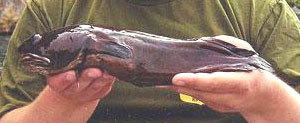
Andreas
Widegren caught a
record weight (542 g) angling catch for Sweden of the small fish known
as the Tadpole Fish, Raniceps raninus.
It
measured 33 cm long.
Link
to Full Report & Photograph
BMLSS
Tadpole Fish
3
- 7 August 2006

Buoy
Barnacles from Connemara
Photograph
by Alison
Thousands
of the stalked Buoy Barnacles,
Dosima
fascicularis, are washed ashore on the
beaches of Connemara, County Galway,
south-west Ireland. They were stranded all
along the west coast of Ireland.
Report
and Photograph by Alison
BMLSS
Barnacles
1 August
2006
Another
Short-snouted
Seahorse,
Hippocampus
hippocampus, was discovered washed
up on the strandline, near Brighton Pier (=Palace
Pier) by beginning of Volk’s Railway (TQ 315038).
The
discoverer was a Mr J Chapman.
BMLSS
Seahorses
July
2006
This
month was characterised by an unprecedented heat wave over northern Europe
with air temperatures exceeding 30 ºC
and
the prolonged heatwave resulted in elevated sea water temperatures in shallow
coastal waters.
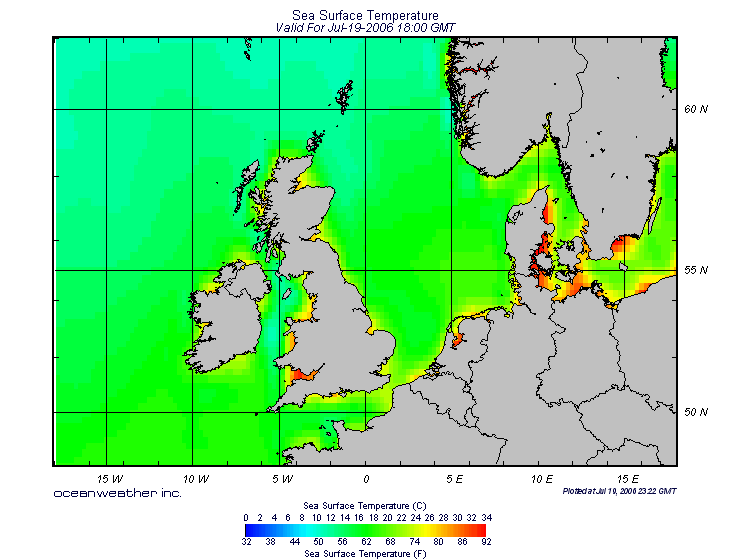
The local
inshore sea temperature at Shoreham-by-Sea
(Sussex) was 19.8 °C on
20 July 2006. However, in the central
English Channel the surface sea temperature measured 16.8°C.
Surface
Sea Temperatures (Link)
27
July 2006
THE
UK Government has published proposals to stop new fisheries targeting Tope,
a species of large coastal shark. Defra
proposed pre-emptive measures after receiving reports in 2005 that a commercial
fishing operation to catch the sharks was being considered. The fishery
never materialised, but the Department remains concerned that any future
proposals for targeting Tope
would be unsustainable because of the shark's life-cycle.
20
July 2006
During
a routine aerial survey for marine wildlife off the most south-western
tip of Cornwall, researchers from the University
of Exeter School of Biosciences, the Marine
Conservation Society (MCS) and Cornwall
Wildlife Trust counted 19 Sunfish,
Mola
mola, in two hours.
BMLSS
Sunfish
July
2006

This
shad
was caught off Orcambe Point, Devon, from a boat, half a mile off shore
in about 12 metres (40 foot) of water. It took a small "sabiki type" feather
on a trace of six and was caught on the same retrieve as two Mackerel.
It was 30 cm (1 ft) long approx. The most noticeable feature was the scales
which came off easily when handled and were very iridescent. It was a striking,
attractive blue on the back. There was a noticeable row of tiny short spines
on the "keel" off the belly which folded completely if stroked head to
tail. The scales extended onto the sharply forked tail.
This
fish is probably a Twaite Shad,
Alosa
fallax.
Previous
Reports


